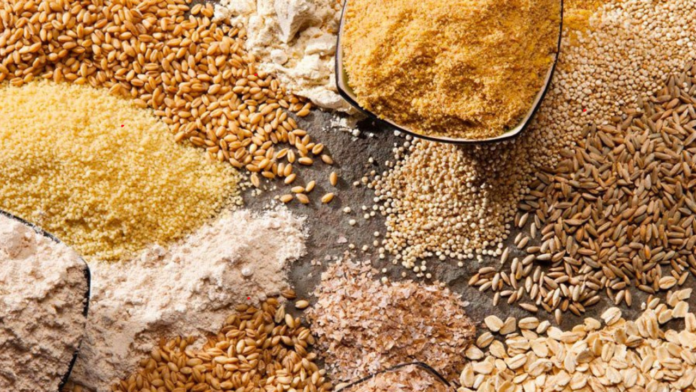I have been always fascinated by the diversity of grains available, but ancient grains have truly captured my attention. These kinds of grains such as quinoa, amaranth and millet have been around for several millennia and are nutrient-rich. Ancient grains provide a richer and more diverse nutritional profile that is more advantageous to our health than any modernized processed grain.
And much can be resolved when we start including these ancient grains in our daily diet. They contain fiber content, protein elements plus important vitamins and minerals elements. Adding ancient grains to our diet helps us improve digestion, maintain healthier weights or even promote heart health.
Would you like to learn more? Continue reading the article below and discover the amazing benefits of ancient wholegrains.
What are Ancient Grains?
These are a group of grains and pseudocereals that have seen no change over several hundred years. On the other hand, modern grains have undergone selective breeding to increase yields and make processing easier, while ancient grains have maintained their genetic makeup without any modifications. Examples include quinoa, amaranth, farro, and millet, which were eaten by ancient civilizations because of their nutritional value.
Ancient grains have huge historical significance. They were fundamental in diets of such ancient cultures as Aztecs, Egyptians or Chinese. Today people become inclined towards these products due to their health benefits as well as rich nutty flavors. Ancient grains are increasingly becoming popular at home as people seek more natural and wholesome food options.
Nutritional Profile of Ancient Grains
One reason why ancient grains are considered superior to modern ones is because they have better nutritional profiles. These particular types of grain contain all the essential nutrients required for overall good health. For example, quinoa is a complete protein beacuse it has all the essential amino acids. Amaranth, on its part, contains lysine, an amino acid not found in many other grains, whereas farro and millet are high in dietary fiber that aids digestion.
In addition to protein and fiber content, vitamins and minerals found in ancient grain crops are plenty. These nutrients play important roles in production of energy, immune function, and maintaining healthy bones. Through the use of these cereal crops one can obtain the benefit of having a diet that is more balanced with higher nutrient density .
Health Benefits of Ancient Grains
Rich in Nutrients
Older grains embody a nutrient powerhouse. They contain more protein, fiber, and essential vitamins and minerals than refined grains do. Quinoa, for example, is high in magnesium, which is necessary for muscle and nerve function, while farro has a lot of iron that blood uses to transport oxygen. The varied nutrient profiles of these old grains support global health by preventing deficiencies.
High in Fiber
Olden days’ cereals are excellent sources of this important nutrient, as fiber is crucial to the maintenance of a sound digestive system. For instance, barley or millet, which is rich in it, helps to stimulate regular bowel movements, thereby keeping constipation at bay. Besides, sugar absorption into the bloodstream is slowed down by fibers, thus controlling blood sugar levels. This makes them an invaluable addition to the meals of individuals with diabetes mellitus.
Good Source of Protein
Protein is crucial for building and repairing tissues, and ancient grains offer a significant amount of this macronutrient. Quinoa and amaranth, in particular, are known for their high protein content. These grains are ideal for vegetarians and vegans looking to increase their protein intake. Including ancient grains in your meals can help in muscle building, repair, and overall growth, making them a versatile and beneficial food option.
Gluten-Free Alternatives
Grains like quinoa, amaranth and millet come without any gluten inside them thus they are suitable for individuals on gluten-free diets .One can enjoy various dishes yet n,o compromise is made regarding taste and nutrition contained therein .Therefore people with such dietary restrictions can take necessary nutrients thanks availability of gluten-free ancient plants.
Rich in Antioxidants
Antioxidants help to safeguard our bodies from oxidative stress and inflammation. Olden-day grains such as buckwheat or teff are rich in antioxidants that include flavonoids and phenolic acids. They aid in lowering the chances of serious illnesses like heart disease, cancer, and neurodegenerative conditions, among others. So, the consumption of ancient cereals enriched with antioxidants is expected to fortify your body’s defense mechanisms against oxidative damage.
How Ancient Grains Support Overall Health
Digestive Health
One way that ancient grains promote digestive health is through their high fiber content. They are good for regular bowel movements and prevent constipation because they contain a lot of fiber. Fiber contains prebiotics which feed the beneficial bacteria in the gut, thereby improving gut health and preventing gastrointestinal disorders. Fiber dense ancient grains like barley, farro always help to keep your digestion healthy.
Heart Health
High levels of fiber, antioxidants, and healthy fats make ancient grains heart-friendly foods. One can lower cholesterol levels, reduce blood pressure, and improve overall heart health by consuming them. Whole grain varieties such as quinoa or millet can help maintain the elasticity of blood vessels. By including more ancient grains in your diet, you will be able to enjoy a healthier cardiovascular system.
Weight Management
Including ancient grains in your diet can aid in weight management. The high fiber content in these grains promotes satiety, helping you feel full for longer periods and reducing overall calorie intake. Due to their low glycemic index, grains such as quinoa and farro release energy gradually, avoiding blood sugar crashes and surges.
Blood Sugar Control
Ancient grains are highly recommended if you have diabetes or if you are at risk of developing it. This is due to the fact that they contain high amounts of fiber that slow down sugar absorption into the bloodstream, thereby managing sugar levels in the body. Grains like barley and millet have a low glycemic index, which means they do not cause rapid spikes in blood sugar levels. Thus, having them as part of your meals would be helpful in managing or preventing this condition.
How to Include Ancient Grains in Your Meal Plan
Easy Breakfast Recipes
Enjoying some deliciously prepared ancient grain breakfasts is one smart idea. For example, make a breakfast porridge of quinoa with fruits and nuts. Also, overnight oats can be prepared using millet or amaranth. Having them in your morning routine will ensure that you have a consistent supply of essential nutrients for a productive day.
Lunch and Dinner Ideas
Ancient grains are versatile enough to be included in various meals for lunch or dinner. Use cooked farro or barley as an innovation in salad making. Also, create grain bowls on which quinoa forms the base topped with vegetables, proteins and dressing. Casseroles, stews, soups etc.,. Make meal times more exciting and nutritious by trying out different recipes.
Snack Options
Ancient grains can be used to create healthy and satisfying snacks. Make homemade granola bars using oats, quinoa, and dried fruits. Pop amaranth seeds for a crunchy and nutritious snack. You can also use ancient grains to make savory snacks like millet fritters or quinoa patties. Including ancient grains in your snacks can help in maintaining energy levels and prevent unhealthy snacking habits.
A Guide on Purchasing and Storing Ancient Grains
It is important to buy high-quality organic ancient grains so as to get the maximum nutrients for your body. Look out for grains free from any added substances or preservatives. Ancient grains can be found in food stores, grocery stores, and online retailers. It may be a good idea to always buy these products in bulk if you plan on using them often.
Correct storage of ancient grains is the key to keeping their taste and nutritional value intact. To prevent rancidity, place them inside air tight boxes located at cool dark places. If you plan on having the grain for a long time consider refrigerating or freezing it . This can extend their shelf life and keep them fresh for several months. By following these storage tips, you can ensure that your ancient grains remain nutritious and delicious.
Conclusion
Ancient grains are full of nutrition that has several health benefits. They contain proteins, fibers, vitamins and minerals which support whole body health in general. Digestion can be improved by adding ancient grains to one’sone’s daily diet while guarding against heart diseases or managing weight loss. Additionally, blood sugar levels could be regulated with the inclusion of ancient grains since they have unique flavors that can easily fit into different types of meals. Start exploring the world of ancient grains today and experience their incredible health benefits.
Frequently Asked Questions (FAQs)
What are the best ancient grains for gluten-free diets?
Quinoa, amaranth, millet, and teff are excellent choices for gluten-free diets. These grains are naturally gluten-free and offer a variety of health benefits. They are high in fiber, protein, and essential nutrients, making them suitable for individuals with gluten intolerance or celiac disease.
Can ancient grains help with weight loss?
Yes, ancient grains can aid in weight loss. The high fiber content in grains like quinoa and farro promotes satiety, helping you feel full for longer periods. This can reduce overall calorie intake and prevent overeating. Additionally, the low glycemic index of many ancient grains helps in maintaining stable blood sugar levels, which is beneficial for weight management.
How do ancient grains compare in cost to modern grains?
Ancient grains can be slightly more expensive than modern grains due to their lower yield and more sustainable farming practices. However, their superior nutritional profile and health benefits justify the cost. Buying in bulk or choosing less common ancient grains can help reduce costs while still reaping the benefits of these nutrient-dense foods.





